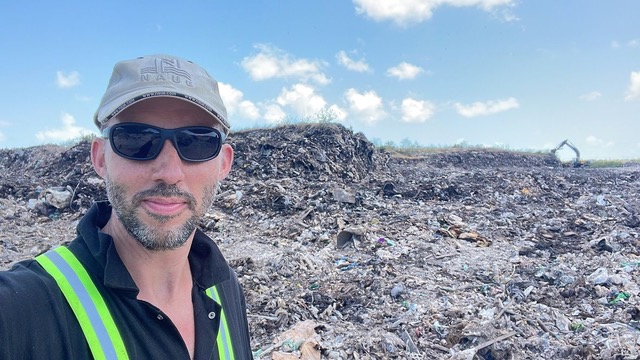16 April 2025, By Brian McCarthy | Waste Management Expert
On 10 April 2025, a devastating fire erupted at the Koutsoventis/Güngör landfill in the Turkish Cypriot community. As the flames consumed the site, endangering nearby communities and polluting the environment, the incident validates concerns raised by the Environmental Capacity Building (Env4Cyp) project financed by the European Union.
In April 2024, under the EU-funded Capacity Building on Environment in the Turkish Cypriot Community project, the European Commission supported a comprehensive technical assessment of the landfill. Conducted by an expert team from Env4Cyp. The assessment highlighted that the site had been seriously compromised by operational deficiencies, unmanaged leachate, explosive landfill gas build-up, and—most notably—an already active underground fire affecting approximately 10% of the landfill area.

The 2024 report laid out a clear roadmap of emergency and long-term actions required to rehabilitate the site, safeguard the environment, and prevent repeated fire outbreaks. Chief among these was the urgent need to extinguish the existing sub-surface fire, stabilise slopes, reinstate the leachate treatment system, and restore gas management infrastructure. The report highlighted that without immediate intervention, the risk of explosion, annual large fires and site collapse would continue.
While some steps to address the causes of the fire have been taken—including the introduction of new machinery—many of the report’s core recommendations have not yet been implemented. The lack of a technically competent operator, with oversight from an assigned client authority, and sufficient financial and professional resources, remains unresolved. The gas extraction system continues to vent uncontrolled methane, posing serious risk to the environment and health and safety. The leachate system has not been rehabilitated, and critically, the underground fire has not been extinguished.

Figure 1: Summary of main critical findings from the landfill site assessment (identified hotspots (fires) highlighted by stars.
Source: Koutsoventis/Güngör Technical Assistance: Site Assessment and Recommendations. Env4Cyp, 2024.
The incident is a stark and urgent reminder of the cost of failing to act on evidence-based guidance in the environmental sector.
The 2024 report was part of a broader EU effort to enhance environmental governance in the waste and resource management sector in the TCc. The EU continues to support environmental initiatives and actions, but the responsibility to implement essential reforms and actions rests locally.
The latest fire outbreak does not mark the end of the story—rather it can be a catalyst for ramping up serious policy engagement in the sector. The technical assessment provided a comprehensive and viable plan. It has now been backed up by a report on a sustainable funding model for waste disposal services in the Turkish Cypriot community, and a contingency action plan. These follow-on outputs will be presented and discussed with involved stakeholders in the coming months.
If the remaining recommendations are now acted upon with urgency and commitment, the site can still be stabilised, its operational life extended, and the surrounding environment protected. However, if steps are delayed or disregarded, another fire outbreak is not just possible, but likely.

Figure 2: A thermal imaging camera was used to identify hot spots and a CO/CO2 gas analyser used to measure for presence of Carbon Monoxide which is good indicator of active fire. Source: Koutsoventis/Güngör Technical Assistance: Site Assessment and Recommendations. Env4Cyp, 2024.
Brian McCarthy
Discover MoreThe content of this blog is the sole responsibility of the author and do not necessarily reflect the views of the European Union.



